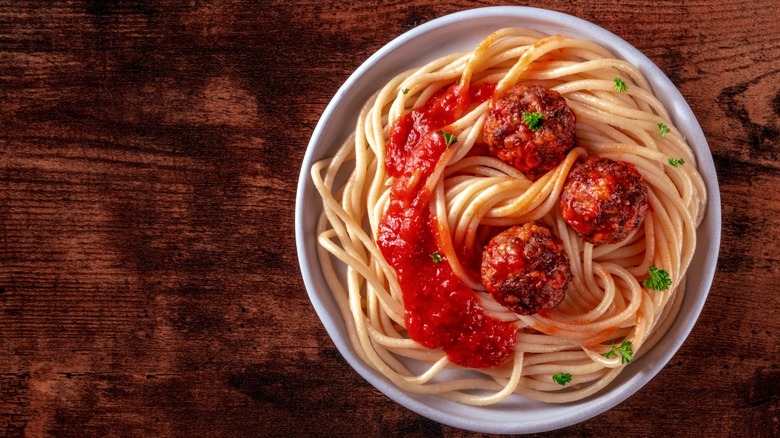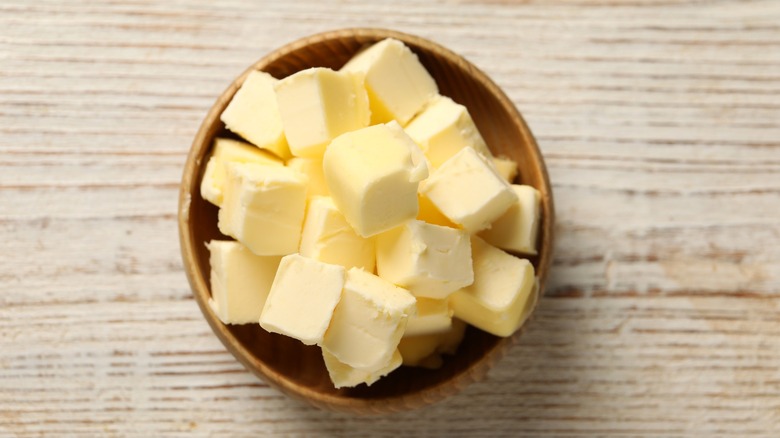How To Use Butter To Make Spaghetti Sauce Taste Restaurant-Worthy
Home cooks often struggle with making their cuisine look and taste as though it were being served in a Michelin-starred restaurant. However, many culinary techniques are not that difficult to master — sometimes, it merely requires knowing that they exist in the first place and using a common ingredient or two. If you want to improve the texture and body of the sauce, chef Zoilan Ruiz of Le Rêve Restaurant & Raw Bar recommends using butter right at the end of cooking.
"To get that velvety, restaurant-style finish, fold the butter into the sauce just before serving — while it's still in the pan but off the heat or on very low," Ruiz said. "This helps emulsify the sauce, giving it a rich, glossy texture without breaking."
Getting the temperature right is paramount for this procedure. If it is too hot, the butter will just melt into the sauce, so keeping it to less than 195 degrees Fahrenheit is ideal. It is also crucial to be patient. Mix in one small cube of butter at a time, whisking until it fully incorporates into the whole before adding the next. When you see the sauce has taken on a silky sheen, this is your cue that no more butter is needed.
Skip the tomatoes and make a butter sauce
Butter can take both the best and worst pasta sauces to the next level, but chef Ruiz prefers to let the ingredient shine on its own by making butter-based sauces. He said, "One of my favorite butter-based sauces to make is beurre monté — a classic, minimalist emulsion made by whisking cold, diced butter into gently simmering water until it reaches a silky, sauce-like consistency." Beurre monté translates to "mounted butter." This approach lets the luscious golden goodness speak for itself rather than being added to a separate sauce. Still, that doesn't mean the creamy flavor can't be enhanced with complementary ingredients.
"Butter-based sauces are rich and luxurious, so the best additions are ones that cut through that richness with freshness, acidity, or aromatic lift," Ruiz said. However, you don't necessarily want to start tossing in any old ingredients from your spice rack. According to Ruiz, "My favorite is tarragon, a subtle anise flavor that adds a fresh, slightly herbal complexity that complements butter beautifully without overpowering it, lemon juice and zest to brighten the dish with acidity, and lemon-infused olive oil, adding a silky texture and a punch of citrusy aroma."

